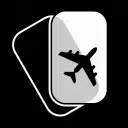Part 1: How Do Taxes Affect Jet Charter Rates?
We sometimes get asked how taxes are calculated for our charter flights. To keep our clients informed, we’ve decided to answer those questions here, since jet charter taxes are a necessary cost of travel.
**Please note this blog article is intended as a general overview of taxation on jet charter rates and is not an official analysis of IRS rules. (You can find the complete IRS regulations here. Chapter 4 is relevant to Air Transportation Taxes.)
Four types of taxes can be levied on domestic and international flights: the Federal Excise Tax (FET), Domestic Segment Tax, International Head Tax, and a special Alaska & Hawaii Head Tax. Let’s focus on the most widely-applied domestic tax, the FET.
The Federal Excise Tax is levied on almost all aircraft operations within the USA. The tax rate is currently 7.5 percent for passenger flights and 6.25 percent for cargo flights. Interestingly, the fee also affects jet charter rates for flights that originate in the US and end in Canadian and Mexican airports within 225 miles of the US border. For example, a Los Angeles to Vancouver charter flight would be taxed under FET, but Los Angeles to Edmonton (Alberta, Canada) would not.
Several FET exclusions may affect your jet charter rates.
Small Aircraft Exemption
You qualify for an exemption if your non-turbo-jet aircraft’s maximum certificated take-off weight is 6,000 pounds or less. Unfortunately, none of the fixed-wing aircraft in the Stratos Charter network are small enough to qualify for this exemption. On the positive side, you’ll probably appreciate that our aircraft provide plenty of cabin space and legroom.
Uninterrupted International Transportation Exemption
Flights originating in the USA that make a temporary stop before continuing to an international destination are not subject to the FET. This only applies if there is no change in the passenger list at the refueling stop.
Flights Over International Waters & Land
If you are flying to Alaska or Hawaii, you’ll need to cross an international territory. That portion of your flight is exempt from the FET. The exemption starts when you cross the international border or three nautical miles from the low tide point on the coastline. So, not only do American coastlines look stunning from the comfort of your private charter jet, but they can also save you money on your jet charter rates. (Although, as we’ll explain in the next blog article, the government has several ways of ensuring they get a percentage.)
Open Jaw Flights
This is a return flight where the origin or destination airports are not both on the same route. An example would be flying from Boston to Turks and Caicos, signing a deal over lunch, then flying to Tampa for a presentation, then back to Boston. Shown on a map, the route looks like a letter ‘V,’ or more colorfully, an alligator with an open jaw. Depending on the distance ratio between the three airports, the flight may be deemed a domestic flight (FET applies) or two international flights (FET exempt).
We hope this gives you some insight into the FET. This 7.5 percent levy may cause some travelers to consider jet charter rates, but others would argue that safe skies, secure airports, and robust air-traffic control systems are worth the surcharge.
To arrange a safe, customized private jet flight to anywhere in the world, just call Stratos Jets—888-593-9066.
Are you ready to book your New York to Paris charter flight yet?
Our friendly, expert air charter agents are here to answer questions or start your quote today. Don`t wait, call now and we'll get you on your way to your destination!
Call 888-593-9066











